WILLCOME Disposable Underpads are versatile for a variety of personal and professional purposes. Commonly, they are used on hospital beds to absorb urine and other bodily fluids. WILLCOME high quality disposable absorbent underpads Provide an effective barrier against urine, blood, alcohol etc. they are soft, absorbent, large pads that are placed flat on any surface and protect your bed, mattress, crib, wheelchair, or furniture from moisture. Diamond quilted pattern for wrinkle resistance and added weight allowing the pad to resist shifting on the bed.
However, they can also be used in at-home care as protection for patients and old people with incontinence issues or they can even be used to prevent unexpected leaks from newborns or puppies. The pads are sold in bulk and pre-folded for convenience, so caretakers are always prepared for an accident. As one of the leading disposable underpad manufacturers, WILLCOME offers premium quality, eco-friendly, and absorbent solutions tailored for healthcare needs.


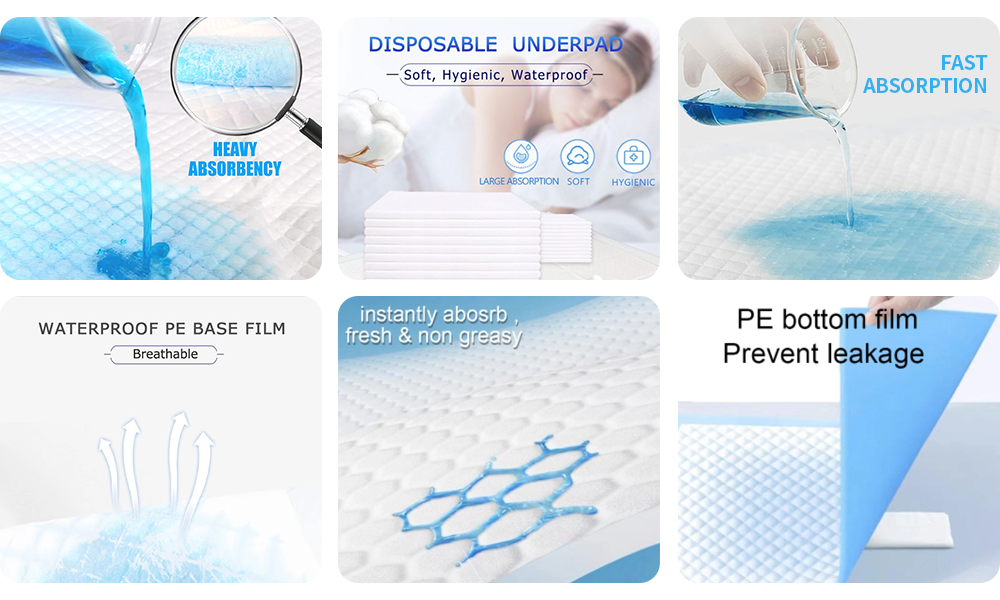
High Absorbent, quick absorbency, easy and safe, leakage protection.
Soft Breathable non-woven top-sheet ensures comfortable.
Water-proof film back-sheet guarantees hygiene and clean.
Super absorbent core can lock in urine quickly to prevent leakage.
Sealed edges & plastic bottom sheet to prevent leaking.
| Product name | Disposable underpads, bed pads, adult urine absorbent underpad, incontinence underpads |
| Size: | 40×60cm(S), 60×60cm(M), 45×70cm(L), 55×80cm(XL), 60×90cm(XXL), 1200*2200cm, etc. (Can be customised) |
| Water absorption | 400ml, 500ml, 600ml, 700ml, 800ml, 900ml, 1000ml |
| Material | Non-woven surface Absorbent tissue paper Super Absorbent Polymers (SAP) Imported fluff pulp Absorbent tissue paper PE waterproof bottom film |
| Weight | 35g, 45g, 60g, 70g, 420g, etc... |
| Packing | 5-10pcs/bag |
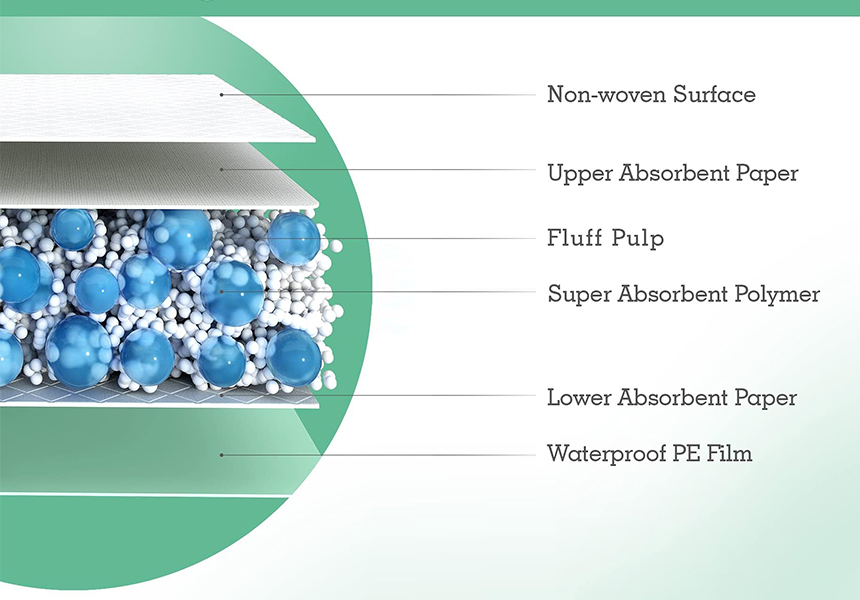
Absorbent Core Material: Fluff Pulp or fluff pulp+Super Absorbent Polymers (SAP)
Top Layer Material (Facing Layer): Non-Woven Fabric (or Tissue paper)
Backsheet Material: Polyethylene (PE) Film (or Polypropylene (PP) Film)
Adhesive or Tape: adhesive strips or tape on the backsheet (Optional)
Additional Layers: Depending on the specific design and purpose for reinforcement, odor control, or extra absorbency.(Can be customized)

Hospital care: includes gynaecology and postpartum care of pregnant women, paediatrics, surgical care of the elderly and post-operative incontinence management.
Health care facility protection: including the protection of assistive equipment such as beds and wheelchairs.
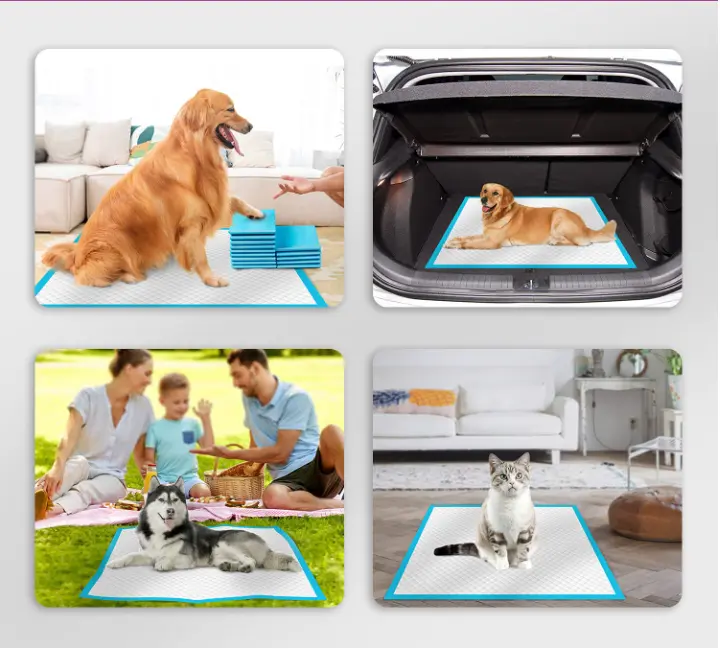
Pet care and incontinence management: including home, travel and outdoor activities, vehicle protection.
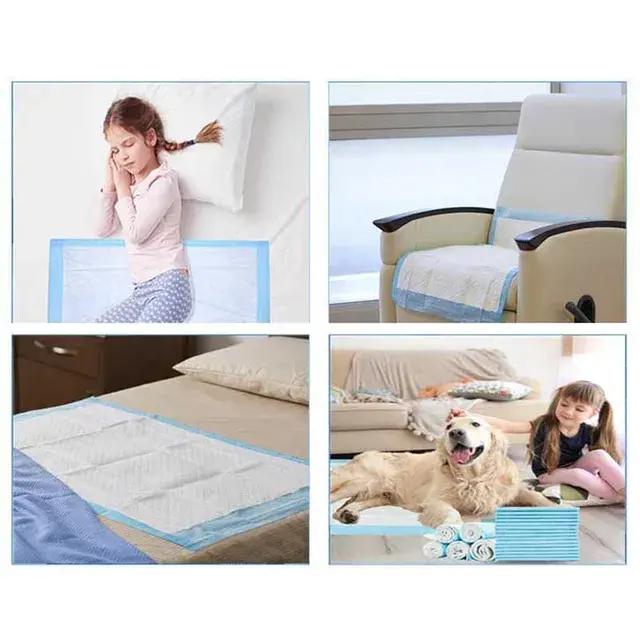
For Bed Use: Position the underpad on the bed, typically under the patient’s hips or buttocks, where it can catch any moisture.
For Chair Use: Place the underpad on the seat of the chair, ensuring it covers the area where the person will sit.
For Procedures: Place the underpad on the examination table or any other surface where a procedure will be performed.
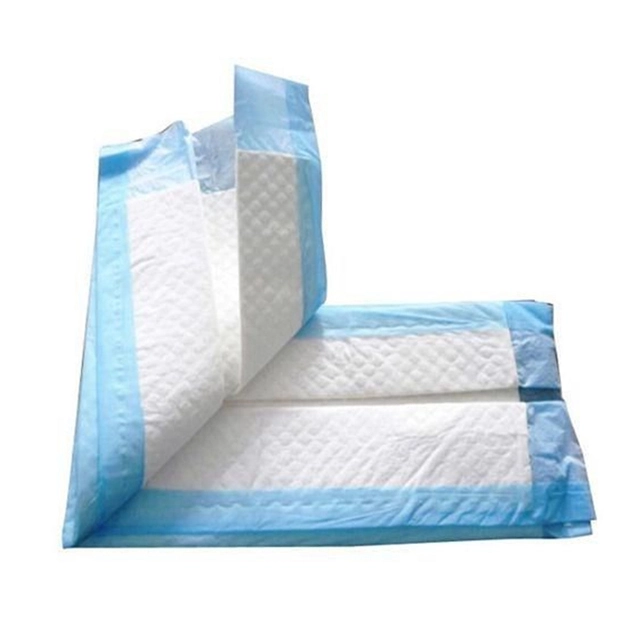
Remove the underpad from its packaging and unfold it completely.
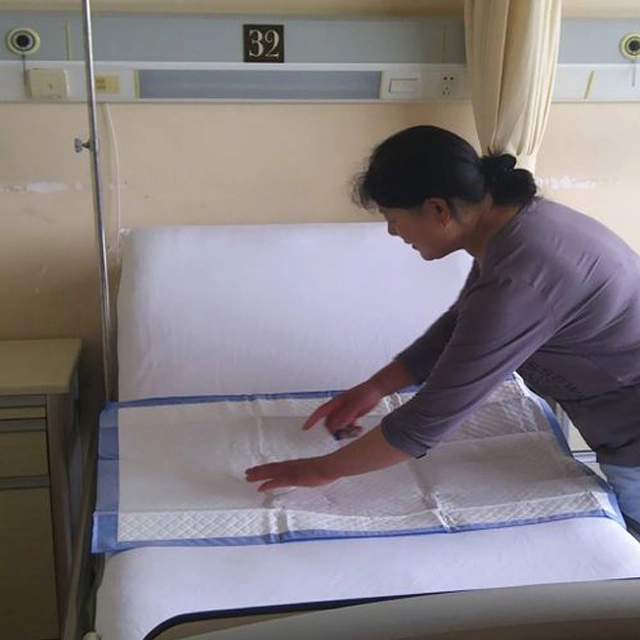
Place the underpad on the surface with the absorbent side facing up. The plastic or waterproof side should be facing down to prevent any moisture from seeping through.
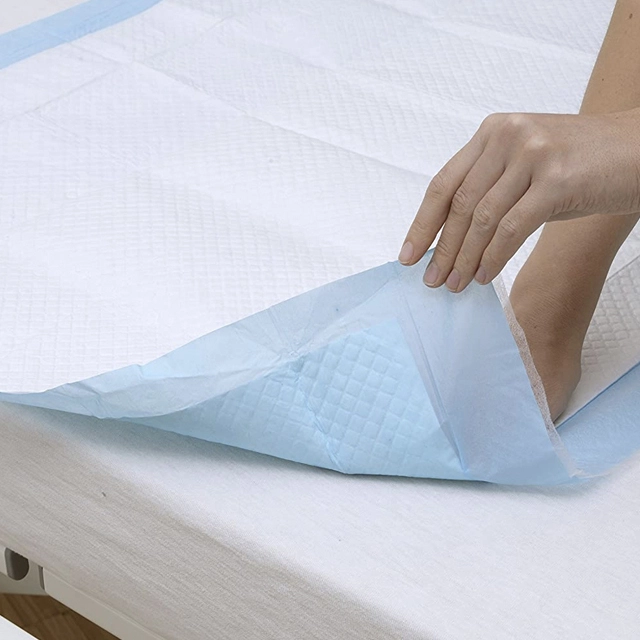
After use, When removing a soiled underpad, fold it inward to contain any moisture and prevent spills.

 What are disposable underpads used for?
What are disposable underpads used for?
Disposable underpads are primarily used to protect surfaces such as beds, chairs, and car seats from incontinence-related leakage. They are also useful during medical procedures, pet training, or protecting surfaces from any type of fluid spillage.

 What sizes do disposable underpads come in?
What sizes do disposable underpads come in?
Disposable underpads come in various sizes to accommodate different needs. Common sizes include small (17” x 24”), medium (23” x 36”), and large (30” x 36”) to fit beds, chairs, and other surfaces. Be sure to choose a size that provides enough coverage for your specific use case.

 Differences Between disposable Chux and disposable Underpads
Differences Between disposable Chux and disposable Underpads
Thickness: Chux are thinner and less absorbent compared to disposable underpads, which are thicker and designed for heavier absorption.
Purpose: Chux are ideal for light-duty tasks like quick cleanups, while disposable underpads are better for extended use or managing incontinence.
Size: Underpads typically come in larger sizes, providing more coverage than Chux.
Durability: Underpads are sturdier, reducing the risk of tearing during use.
Read further: Differences Between Chux and Underpads